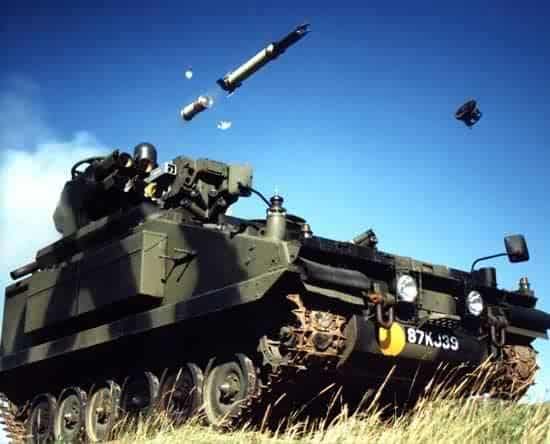
Added 29-3-18
Updated 3-5-24
Respectfully dedicated to the memory of Ranger Larry
This article is intended as a compliment to those that I have written about possible future trends for infantry and armour.
Sadly, my artillery expert, LTC Larry A. Altersitz, died before I could run the first draft by him.
Larry was always generous with encouragement and never took anything, including himself, too seriously.
He was an example to us all and is greatly missed.
When considering the possible nature of future artillery systems, it is prudent to first consider the possible targets and missions that they may be used for:
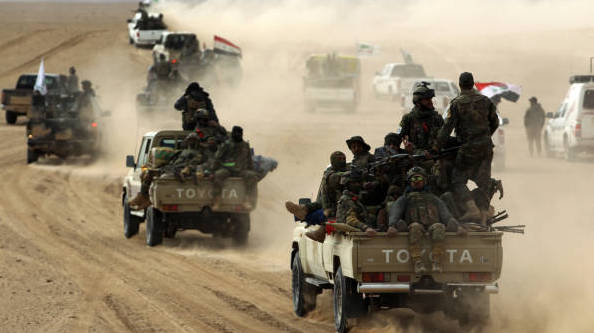
An enemy who is dug in or in an urban environment poses some different challenges for artillery. Such positions may occur in locations close to or among non-combatants.
One strategy for engaging highly mobile enemies is to saturate the area with DPICM-type bomblets.
MBRL systems allow a large number of such munitions to be delivered to a target area in a short space of time.

Most casualties are likely to occur in the first ten seconds of a barrage and an MBRL battery can deliver a greater weight of fires in this time that one armed with conventional howitzers.
Armoured vehicles will be less affected by fragments and require direct hits from DPICM to neutralize them.
MBRLs can also be used to deliver smart sub‑munitions of the SADARM‑type against such targets.
MBRL are also well suited to the rapid laying of smoke‑screens.
Changing the load of an MBRL system is a slow process, so an MBRL battery may have some launchers loaded with one warhead type and others with another.
The presence of non‑combatants is likely to be a feature of many future military operations and this is likely to restrict the usefulness of unguided saturation fires.
When MBRL are used in the future, they are more likely to use a smaller number of rockets with guided or homing sub‑munitions.
Smart sub‑munitions may have the capability to distinguish between buildings and different types of vehicles. This has obvious utility in urban environments.
MBRL systems may have less utility against fortified positions. DPICM‑type bomblets may have some use against open entrenchments but the majority of bomblets delivered will be wasted.
Smart sub‑munitions may be more useful if they can distinguish entrenchments and weapon pits.
Unitary HE rockets from MBRLs lack the penetration of conventional shells, and will have only limited effectiveness against covered positions.
The most effective MBRL warheads against entrenchments are likely to be thermobaric systems since the vapours can enter the interiors of buildings, bunkers and shelters.
The inherent assumption above is that smart/terminally guided sub‑munitions (“smartlets”) have a very high probability of successfully acquiring, identifying and engaging their targets.
In real world conditions, a small margin of error in each of these stages may compound to a relatively low percentage of successful attacks.
Another potential problem is that a smart sub‑munition may not be smart enough. What happens if a round programmed to attack tanks is fired against a field of parked aircraft, open entrenchments or armed Toyotas?
A round containing scores of “dumb” bomblets may be more versatile, and actually more effective than one carrying a smaller number of smartlets!
The current cluster bomb hysteria has spread itself far wider than the understandably genuine concern about delayed effect munitions. In order to satisfy the requirements of the Convention on Cluster Munitions we may see the development of nominally smart munitions that in practice rely more on numbers than their guidance systems: “lobotomized” smartlets?
Realistically, an attack with sub‑munitions is more likely to thin down an enemy formation than effectively eliminate it.
Bomblets and smartlets are most suited to interdiction against forces approaching a battle area. Therefore they are most suited to use in longer ranged delivery systems.
Mines (or minelets) are another sub‑munition that may be delivered by artillery or by air.
A minefield laid in advance (by whatever means) may be located and avoided.
In “Antitank”, (p.119) Richard E. Simpkin notes that remotely delivered mines may be most effectively used as “instant mines”: Placed immediately before or around an enemy without giving him time to react or change route. Not so much “area denial” as “mobility denia”l.
In an article in Armor, Simpkin notes: “The place to use minelets is right in the main tactical battle, covered by fire; not on their own in an economy of force role.” and “Within the tactical battle, minelets are a much more effective form of submunition than bomblets, because they need to coincide with the target only in space, not in time as well.”
A formation neutralized/fixed in such a manner may then be attacked with other, more decisive means.
Mines such as FASCAM’s RAAMS and GATOR are well suited to such applications. Equivalents that may be delivered by MBRL, mortar or fixed‑wing aircraft flying at NOE altitudes would be useful.
A number of systems for scattering mines from helicopters exist, but the proximity of the enemy in the instant mine role would probably put these machines at unnecessary risk. Helicopters are probably better saved for other roles, and instant minefields delivered by artillery, UAVs or possibly fixed‑wing aircraft.
It is worth bearing in mind, however, that the instant mine role may adequately filled by track‑cutting mines. All that is needed is to slow the formation down as targets for other weapons is an M‑kill, or the potential threat of one.
With this in mind, it is possible that APAM bomblets such as DPICM might also be designed so that some of the payload function as track‑cutting mines.
If track‑cutting designs of mine are made more effective, lighter and more compact, greater numbers may be carried within a munition.

Many modern ATGWs have an Over The Horizon/Non-Line Of Sight (OTH/NLOS) capability and we have seen such systems increasingly used in an artillery-style role for precision attack against non-vehicle targets at long ranges. The video capabilities of some systems has lent a new meaning to “reconnaissance by fire”. The British Army has adopted the Spike NLOS on M113 hulls in an artillery role as “Exactor”.
If ATGW systems are going to have an effective artillery role they are going to need to be capable of engaging multiple targets.
The capabilities of systems such as the air-launched Brimstone suggest that this is quite possible, so it is likely we will see an increasing artillery role for long range ATGWs.
It has been suggested that to reflect their increased applications such weapons be designated AGTMs (Anti-Ground Target Missiles).
ATGWs are also less effective against thick earth and brick than conventional rounds. They have the potential to be used to eliminate exposed targets such as weapon pits or to use their precision to attack vulnerable points such as doors, windows and gun ports.
In “Antitank”, Richard E. Simpkin suggests a NLOS-ATGW with a 30 kg HEAT warhead for use by artillery units (“SSGW-30”). This was intended to have an increased disruptive effect on the target in addition to any penetrative damage. Against lightly armoured targets such as APCs, the increased blast effect had a greater chance of also disabling the occupants.
A 30 kg warhead was also suggested for an air‑to‑surface anti‑tank missile launched from fixed‑wing aircraft (“ASGW-30”). Such a missile would be a more mass‑efficient alternative to Maverick. The AS.15 and AS‑20 gives some idea of the size and total mass such a missile might have.
Missiles with 20 kg HEAT warheads were suggested for use from helicopters (“ASGW-20”).
In a later article in Armor, Simpkin suggests “...there is a need to unclutter the direct fire zone and exploit the principle of massing fire by making the primary chemical energy surface-to-surface antiarmor weapon system an indirect fire one.”
Currently the conventional howitzer dominates artillery formations.
During the Cold War some authorities advocated that the minimum calibre sufficient to break up a Soviet armoured column was 155mm.
This may have been the case for conventional HE rounds, but newer varieties of ammunition such as DPICM would seem to challenge this.
A sub‑munition dropped from a 105mm round is just as deadly as the same type deployed by a 155mm. Whilst a single 105mm shell can carry less bomblets than a single 155mm, this may prove not to be a disadvantage.
A given number of sub‑munitions deployed by smaller calibre multiple shells may allow a greater control over the density and shape of the pattern.
Compared to the 155mm M777, the 105mm M119 has several times the rate of fire, no doubt partially due to the lower weight of the individual rounds.
Massed armoured formations are relatively uncommon in current military operations. The smaller destructive area of unitary 105mm shells may prove advantageous when collateral damage or fratricide of nearby units or non-combatants is a concern.
Conventional “tube artillery” has advantages over other systems against substantial structures such as field fortifications.
Artillery shells have better penetration against substantial cover than many other means of attack.
Shots can be “walked” onto a target, facilitating cost‑effective neutralization.
I am not aware of any dedicated concrete‑piercing rounds currently being produced for the 105mm or 155mm.
It is possible that the performance of standard HE rounds could be improved by replacing the standard fuse assembly with a hardened steel point incorporating a delayed fuse option?
Against highly mobile targets, the conventional howitzer is inferior to some of the alternatives. Sustained fire is less useful in such a context than saturation fires.
Creating a guided round for a conventional artillery gun poses a number of technical challengers over those of creating a guided missile.
Electronics and software need to accommodate far greater speeds and levels of acceleration.
A number of Cannon Launched Guided Projectiles (CLGP) have been developed, however. These include Copperhead, Krasnopol, Basir and the GPS-guided Excalibur.
The majority of these rounds use Semi‑Active Laser Homing (SALH) as a guidance system, necessitating a third party to illuminate a target. This may limit their use against fast-moving or multiple targets.
The short flight times of such rounds may eliminate the possibility of using some of the alternative guidance systems used on other long-range missiles.
On the other hand, the short time of flight of CLGPs may make them the system of choice for engaging isolated targets in a time-dependent scenario.
An advantage that the conventional howitzer has over MBRLs and ATGWs is a greater variety of ammunition types. Changing the type of round fired by a weapon is a simple matter of placing the appropriate shell in the chamber.
152mm/155mm ammunition, for example, is available in HE, DPICM, CLGP, smoke and illumination rounds. Some armies issue incendiary, chemical, leaflet, HESH, APERS and radio‑jamming projectiles.
New technologies such as sky-eye“surveillance dust” or “surveillance fluff” may be deployed by artillery shell.
If the multiple rocket systems are “the commander’s shotgun”, the tube artillery is his “Swiss Army Knife”, permitting a much wider range of fire missions.
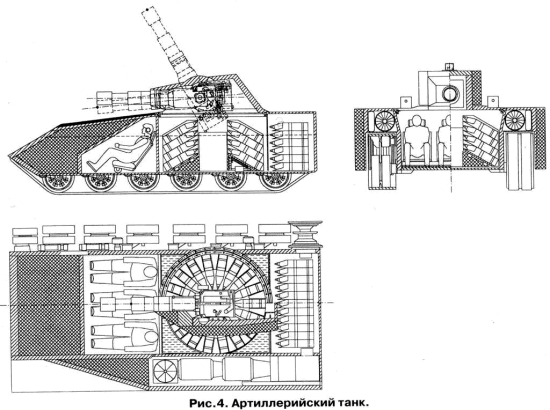
The ideal howitzer calibre may prove to be neither 155mmn or 105mm.
Improvements in shell design have increased the destructive effect of some smaller rounds.
Due to their more vertical terminal trajectory, mortar rounds have a more circular and more useful effect area than larger-calibre howitzer rounds.
Many manufactures now assert that their 120mm mortar rounds are comparable to 152mm/155mm howitzer rounds.
The Russians have modified some of their 122mm 2S1 SPHs by replacing their gun-howitzers with a 120mm 2A80 gun-mortars. Presumably the other characteristics of the mortar are considered to be worth the reduction in maximum range.
Russian airborne and marine forces also use gun-mortar equipped APCs for both direct and indirect support fire.
In my article on Russian armour I suggest that a heavily armoured 120mm gun‑mortar-armed vehicle might become an integral component of armoured companies.
The West has a number of self-propelled 120mm gun‑mortar systems but the Russians have taken the interesting step of mounting gun‑mortars on towed carriages, so they can be used by non-mechanized, mountain or heli‑mobile forces. Some motor rifle brigades have been issued these weapons and it seems likely they are intended to supplement or replace conventional anti‑tank guns in infantry support and positional defence roles.
120mm mortars are already infantry weapons in many armies but for infantry battalion use the author favours a mix of 60mm and 98mm weapons.
Potentially the 120mm mortar and gun-mortar can substitute for both 105mm and 155mm artillery systems, at least in the close-support/tactical role.
Salvo mortars may fill some of the roles of MBRL, but utilize the same ammunition as single barrelled 120mm mortars.
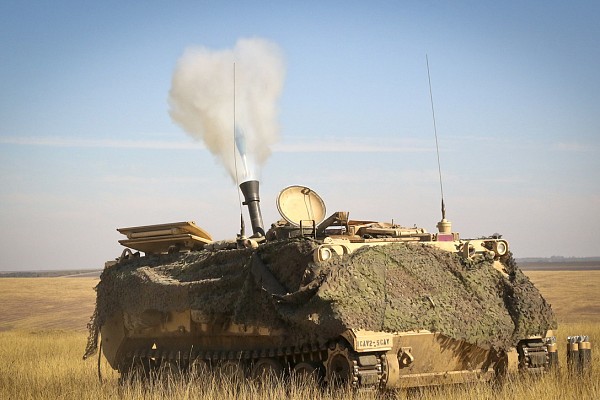
Reducing the number of calibres in service from three to one will simplify and facilitate the development of new ammunition types.
Guided, sub-munition and rocket-assisted 120mm mortar rounds are already available.
Wider acceptance of the 120mm as an artillery system will probably see the development of even longer-ranged 120mm systems with heavier barrels and capable of taking more powerful propellant charges.
In the past, I have proposed that naval vessels should replace their 4.5" or 5" guns with 155mm weapons.
This would greatly simplify ammunition development, allowing rounds developed for the army to be used by the navy and vice-versa. Ironically, as the navy launches the 155mm-armed USS Zumwalt, I conclude that adoption of the 120mm gun-mortar may be a more prudent choice for the army. I cannot see the 120mm gun-mortar being a primary naval gun, although heavy-mortars have served well for shore bombardment and mortar-armed boats date back to at least the American Civil War. Perhaps, as long-range naval attack more becomes the province of missiles, the 120mm gun-mortar may see useful application as secondary armament against closer surface, shore or underwater targets.
The proposed application of railguns for indirect-fire seems unlikely!
Despite the logic of the above paragraphs, the 155mm howitzer is unlikely to disappear for a long while so the compatible 155mm naval gun remains a prudent idea.
Ship-based MBRL systems have additional potential as weapons against submarines and fast-moving boats.
Modern reconnaissance assets may detect targets at ranges beyond 60 miles with an insufficient window of opportunity to use an airstrike.
A potential solution is a long-range tactical missile that can deliver a useful warload of DPICM and/or smart sub-munitions. (For convenience I will call this class of systems “Barrage Supersonic Tactical Artillery Rocket Systems” or “Barrage STARS”.)
Barrage STARS should be capable of being launched with minimal preparation. A short time of flight would be desirable, suggesting a speed in the supersonic range.
The obsolete MGM-52 Lance missile gives a hint of what such a system might be like. The Lance was just over six metres long and 560mm calibre. The conventional variant carried 1,000 lbs of sub-munitions to a range of 75 miles at Mach 3. Notably these missiles could be launched or transported by M113 variants.
A modern STARS could be expected to show improvements in accuracy, range and velocity. Compatibility with relatively light, compact vehicles such as the M113 should be a design consideration.
Tactical missiles that meet STARS requirements already exist, but are usually controlled by division-level formations or higher.
We may see increasing use of large tactical missiles at artillery brigade or even battalion level in future.
Many field fortifications may be resistant to weapons of 155mm calibre or less. Logically there is little point in constructing fortifications that cannot withstand 155mm!
Larger-calibre guns are rare in modern armies. A notable exception is the Russian move to redeploy and increase the allocation of 203mm howitzers and 240mm mortars.
For forces that lack access to a stockpile of such systems, different approaches may be needed against an enemy that digs in.
A unitary version of the large tactical missile suggested above may be one possible solution against deep-buried or substantial targets. This “Bolide STARS” weapon would have a reinforced nose assembly. Ideally, such a weapon would be supersonic on impact and have a delayed detonation option.
It may be prudent to make larger missiles compatible with the warheads of modular aircraft bombs such as the Mk.80 series.
Potentially, a new generation of tactical ballistic missile systems would also see applications against offshore targets such as surface vessels and submarines.
In future conflicts, the requirement to attack enemy airfields, supply depots, reinforcement formations, support centres, and strategic command headquarters may see even greater use of longer ranged artillery missile systems.
Currently, cruise missiles are mainly used in naval and strategic roles and have rarely been used in direct support of ground forces.
Cruise missiles can be thought of as a variety of drone or UAV, however.
Some modern missile systems include a “loiter mode” so the distinction between UAV and missile continues to blur.
A variety of “kamikaze drones”. designed to carry a warhead and impact with a target, are being developed or are available and essentially these are small tactical cruise missiles.
It has been conjectured that larger future cruise missile systems will be optionally reusable. They would attack their target(s) with one or more sub-munitions and only impact a target themselves as a last resort. Current cruise missiles are often not used at their full range, so the idea of a missile making a “round trip” and being recovered in friendly territory is plausible.
Many UAVs already carry munitions.
Artillery formations already use drones for reconnaissance, target acquisition and damage assessment. Many of these units can recover and reuse drones.
It is not a huge stretch of the imagination to see such a unit could also arm its drones and effectively offer a theatre cruise missile capability in support of local forces.
Drones along the lines of Rheinmetall Taifun or IAI Harop/Harpy have a range of around 500 km and a flight endurance of several hours.
Artillery Attack Drones would be slower than many of the artillery systems already suggested but their long loiter time allows them to search hundreds of square kilometres of terrain and benefit from “man in the loop” decision making.
Arming the drones with smaller precision munitions reduces collateral damage when this is desirable. Against a larger force the drone can direct assets such as AGTMs and MBRLs.
Already available are rifle‑grenades or cartridge grenades that contain cameras. These can be fired over an area of interest and slowly descend by parachute, giving the squad or platoon a real-time view of the area below.
This idea will reach a new level of capability once equivalent rounds for mortars and howitzers are created.
A weapon crew and the unit they are with can have a real time aerial view of a location kilometres distant.
Such a view could be used for target selection, fire-correction and damage assessment.
As well as parachutes, balloons or rotors might be used to keep the camera aloft.
Potentially, such rounds might deploy freely manoeuvring drones above a target.
Some armies practice a 10-10-10 rule for using artillery: 10 minutes from target acquisition to fire, 10 minutes of fire, and 10 minutes to relocate and be ready to fire again. Achieving this requires very mobile artillery systems.
The last few decades have seen two contrasting trends in the field of self-propelled artillery.
One trend is towards heavy, tracked systems as typified by the M109, AS90 and the cancelled XM2001 Crusader. Such vehicles have large, enclosed fully traversing turrets.
The other trend has been towards mounting gun/howitzer systems on the rear of military trucks. Examples of the latter include the French CAESAR, Swedish Archer and Israeli ATMOS 2000.
Obviously, enemy forces will prefer to operate beyond the range of artillery if possible. If the enemy cannot be brought into range of the artillery, the artillery must be brought in range of the enemy.
It is desirable that future artillery systems can be easily air-transported by assets such as the C-130. Ideally the artillery systems would be light enough for helicopter transport or air‑drop too.
Modern turreted, tracked SPHs are too heavy for such uses.
Truck-based systems are lighter but their means of traction limits them to roads and good terrain, making their possible firing positions more predictable.
The solution may be to mount the ordinance developed for truck-mounting on light tracked vehicles such as variants of the M113. Such vehicles would be light enough for deployment by air and mobile enough to traverse a wide variety of terrain types, making it easier to get within engagement range of enemy forces.
One variety of such a vehicle might resemble a modern version of the World War Two “Wespe” SPH, a light tracked platform mounting a 105mm howitzer on an open deck.
120mm gun-mortar systems are compatible with APC mounting. A variety of MBRL systems should be compatible with mounting on a M113-type chassis. Vertical-launch AGTM systems are another possible armament.
Variants of the M113 have been used to transport and launch the MGM‑52 Lance missile, so it is possible that it can also handle the larger-calibre surface to surface missile systems suggested above.
M113‑based vehicles could also carry three HAWK SAMs, and therefore could have carried the eight-shot HAWK launcher-compatible Sparrow and AMRAAM mounts that were developed. Surface to surface missiles of comparable dimensions could be carried in similar numbers.
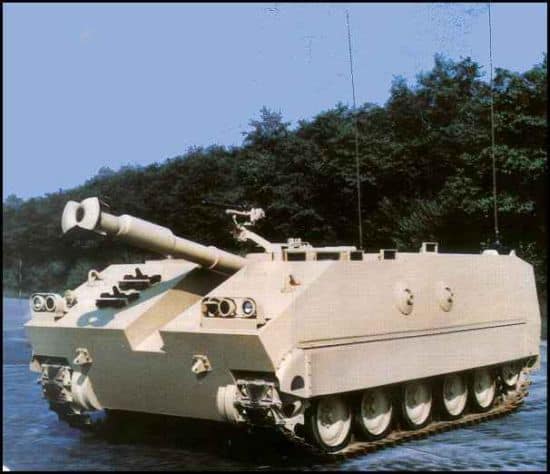
Such light tracked systems will be far more useful to expeditionary forces than the heavy tracked systems currently fielded.
A quick, “off-the-shelf” solution might be to create batteries based around a M1064-type platform. The M1064A3 combines a 120mm mortar with the M113. The M113 can be airlifted, is amphibious and has good cross-country performance. Use of a stretch-variant of M113 would increase ammo capacity.
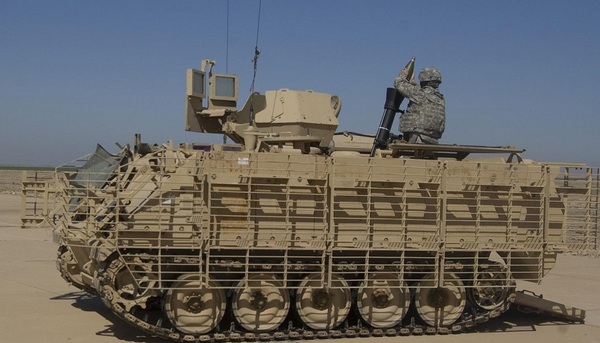
A battery of such mortar vehicles, with around a dozen weapons in total, and including support such as reconnaissance UAVs, would be a highly mobile and cost-effective battlefield asset, well suited to surveillance, fire, and manoeuvre operations. It may be prudent to make a number of NLOS‑ATGW vehicles organic to the unit, and a case may be made to have these in the majority for some missions. Possibly some MBRLs/salvo mortars may also be organic to the battery.
This gives a commander a very useful and versatile asset.
A force that is inserted by helicopter, air‑drop or air‑lift will need the capability to deliver deep‑fires for many missions if it is going to have any practical influence on the tactical or operational situation.
Vehicles light enough to be transported by helicopter and capable of mounting mortar, MBRL or NLOS-ATGW systems will be needed for such forces.
 To reduce weight, it may be common practice to transport the system with a partial ammunition load, the balance of the supply being landed by another aircraft or other means.
To reduce weight, it may be common practice to transport the system with a partial ammunition load, the balance of the supply being landed by another aircraft or other means.
If a very light system is required, each firing platform may be paired with one or more ammunition carriers.
To save weight, the weapon crew do not move in the same vehicle as the weapon.
In “Antitank” p.204, Richard E. Simpkin suggests tracked artillery vehicles of 8 to 10 tonnes (MLC 12), mounting either 120mm mortars or NLOS-ATGW.
The main type was seen as ATGW, but Simpkin felt that the anti‑armour battalion should include a battery of mortars as an integral capability.
A free‑flight variant of the ATGW that could be used to deliver bomblets, smartlets or minelets is also suggested.
Simpkin stresses that these platforms should be capable of being moved underslung by Chinook‑type helicopters.
Such vehicles might resemble the LOHR VPX 40 or CT20 Oxford Carrier. This section of “Antitank” also mentions the Sultan Command Vehicle, presumably to serve as both as battery control and weapon crew transport.
It is probable that Simpkin was basing this vehicle on the CVR(T) family. A Scorpion/Scimitar/Sabre hull without a turret would be less than eight tonnes. A more modern version should utilize M113 components and introduce more modern features such as hybrid‑electric drive.
In a later article in Armor, Simpkin explains one reason for proposing these systems was to relieve conventional close-support tube artillery from delivering minelets and indirect anti‑tank fires in addition to its other roles.
Vehicle‑mounted weapons on such platforms may be are operated rather like towed systems, with many of the crew around the weapon rather than in or on it.
These vehicles were suggested for general support of mechanized forces in addition to for helicopter or light forces.
An interesting idea is to design a pallet mounting a heavy mortar and ammunition or launch tubes for NLOS-ATGW or loitering munitions. Such a pallet could be installed on a very light tracked vehicle, but also mounted on an M113/Uta/M548 or a wheeled cargo vehicle, as needed. Vehicle and pallet could be transported separately when air-lift capability is limited.
Towed artillery systems may seem old fashioned on the modern battlefield but their lower weight can prove to be an advantage when a piece needs to be moved by helicopter, for example, in support of operations in mountainous areas.
Since towed 105mm howitzers are lighter than their 155mm equivalents, they are preferable for such applications.
Australian troops in Vietnam discovered their Italian-made OTO Melara Mod 56 105mm pack howitzers could be transported inside a M113, hidden from prying eyes.
Such applications suggest that 105mm artillery will be with us for some time to come. Similarly 105mm weapons may be more practical to mount on light tracked vehicles such as the M113.
However, the statements made for the 105mm also hold true for 120mm gun-mortars. As well as more conventional 120mm mortars there are the Nona-K 2B16 and Nona-M1 2B23 towed systems.
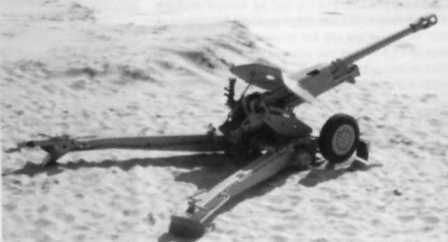
New technologies and changing conditions may necessitate reorganization of artillery forces.
Many modern military operations do not require large scale use of artillery.
In some armies we are already seeing a trend of reducing the levels of organic artillery in manoeuvre brigades. Instead batteries are placed in artillery brigades.
If a formation has a requirement for artillery support, one or more appropriately armed artillery brigades, or components of such, can be attached.
Such an approach provides a more efficient use of artillery assets and may even yield savings in manpower. This in turn can allow a proportionally greater investment for equipment and training.
In other words, an army may have less artillery battalions but what they have are better and more effectively applied.
In “Race to the Swift”, Richard E. Simpkin predicted a move towards artillery brigades and even suggested the brigade have their own infantry and light armour for security. Historically, infantry that protected artillery trains were fusiliers, named after their flintlock “fusils”. Matchlocks with lit matches were not welcome among barrels of gunpowder!
An artillery brigade should include support units, including those that can handle its specialized maintenance and ammunition supply requirements.
In the past I have suggested that an artillery battery or battalion include a few MBRL systems to provide saturation fire when needed. The modelling above suggests that a greater proportion of MBRLs, missiles, drones and other systems may be deployed and that guns/howitzers may be in the minority.
Such an approach is likely to be seen soon in some of the less conservative militaries. A wider variety of rockets and missiles will be fielded, varying in range, guidance, flight mode and warhead.
I don’t envision the guns or howitzers disappearing entirely, however. A small number of tubes is useful to the battalion for firing smoke, illumination, CLGP and other specialized rounds.
It is possible, however, that lighter 105mm weapons are found more practical, although some specialized rounds such as CLGP and SADARM are currently only available in 152mm or 155mm.
Alternately, the battalion’s tubes will be 120mm gun-mortar systems.
By the Author of the Scrapboard : | |
|---|---|
 | Attack, Avoid, Survive: Essential Principles of Self Defence Available in Handy A5 and US Trade Formats. |
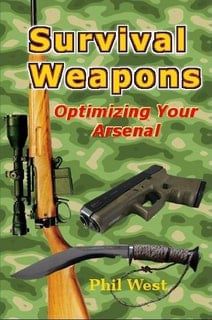 | |
 | Crash Combat Fourth Edition Epub edition Fourth Edition. |
 | |
 | |